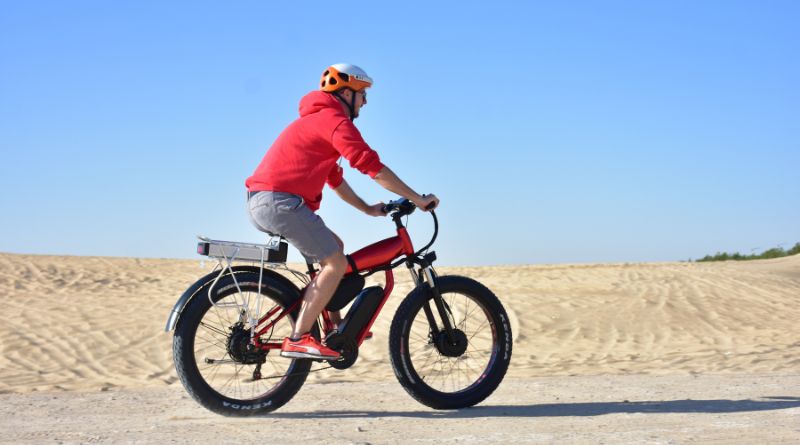Electric bikes, commonly known as e-bikes, have revolutionized modern transportation, providing an eco-friendly, efficient, and enjoyable alternative to traditional bicycles and even cars. One of the most frequently asked questions by potential buyers and enthusiasts alike is: How many miles does a battery last on an electric bike? Understanding battery life is crucial, as it directly affects the usability, convenience, and overall cost of owning an e-bike. In this comprehensive guide, we’ll explore the factors that influence e-bike battery life, how to maximize it, and what to expect from your investment.
Understanding Electric Bike Battery Life
The term battery life can refer to two key aspects: the range per charge and the overall lifespan of the battery. The range per charge indicates how far an e-bike can travel before the battery needs recharging, while the overall lifespan refers to how long the battery itself remains functional before it requires replacement.
For most electric bikes, the battery range typically falls between 25 to 70 miles per charge, depending on several influencing factors. Meanwhile, the battery’s lifespan is usually measured in charge cycles, with most high-quality batteries lasting between 500 to 1,000 charge cycles before their capacity significantly depletes.
Factors Affecting E-Bike Battery Range per Charge
Several factors determine how many miles an electric bike battery can last on a single charge. Understanding these variables helps riders plan their journeys better and extend battery life.
1. Battery Capacity (Measured in Watt-Hours – Wh)
Battery capacity is the primary factor determining range. It is measured in watt-hours (Wh), calculated by multiplying the voltage (V) by the ampere-hours (Ah). For example, a 36V battery with a 10Ah capacity equals 360Wh.
- 250Wh to 400Wh batteries: Suitable for short commutes and leisure rides, typically offering 20 to 40 miles per charge.
- 500Wh to 700Wh batteries: Ideal for longer commutes and moderate trails, delivering 40 to 70 miles per charge.
- 750Wh and above: These high-capacity batteries can extend the range to 70+ miles, depending on riding conditions.
2. Pedal Assist vs. Throttle Mode
Electric bikes usually come with two modes: pedal assist and throttle mode.
- Pedal assist: The motor activates when the rider pedals, extending battery range as the workload is shared. On a mid-level assist setting, riders can expect 40 to 60 miles per charge.
- Throttle mode: In this mode, the motor propels the bike without pedaling, consuming more power and reducing range to around 20 to 40 miles.
3. Rider’s Weight and Cargo Load
The total weight carried by the e-bike significantly affects battery consumption. A heavier load increases motor strain, leading to faster battery depletion.
- Light riders (120-150 lbs): Can achieve the upper range limit of 60-70 miles per charge.
- Average riders (150-200 lbs): Typically get 40-60 miles per charge.
- Heavier riders (200+ lbs) or carrying cargo: May experience a reduced range of 25-50 miles per charge.
4. Terrain and Road Conditions
Flat, smooth roads consume less battery power compared to hilly or rough terrains.
- Flat terrain: Riding on flat roads with minimal stops can extend range up to 70 miles.
- Hilly terrain: Climbing hills requires more power, cutting the range down to 30-50 miles.
- Off-road trails: Rough, uneven trails can further reduce range to around 25-40 miles.
5. Riding Speed and Assist Level
Higher speeds and higher assist levels consume more battery power.
- Low assist level: Can provide 60-80 miles per charge.
- Medium assist level: Offers a balanced range of 40-60 miles.
- High assist level: Drains the battery faster, limiting range to 25-40 miles.
6. Weather Conditions
Environmental conditions also impact battery efficiency.
- Cold weather (below 40°F/4°C): Reduces battery performance by 20-30%, cutting range significantly.
- Hot weather (above 90°F/32°C): Can cause battery overheating, reducing efficiency.
- Optimal conditions (60-75°F/15-24°C): Ensure maximum range and performance.
7. Battery Age and Maintenance
Over time, battery capacity diminishes due to repeated charge cycles.
- New batteries: Deliver full range potential, typically 50-70 miles per charge.
- Mid-life batteries (300-500 cycles): Range drops by 10-20%.
- End-of-life batteries (800-1,000 cycles): Range decreases by 30-50%.
Proper maintenance, like regular charging, avoiding full discharge, and storing in a cool, dry place, helps extend battery life.
How to Maximize E-Bike Battery Life

To get the most miles out of your e-bike battery, follow these tips:
- Choose the Right Assist Level: Use lower assist settings for longer rides.
- Maintain Proper Tire Pressure: Properly inflated tires reduce rolling resistance.
- Avoid Frequent Stops and Starts: Smooth, consistent riding conserves battery.
- Keep the Battery Charged: Avoid letting the battery fully discharge.
- Store Properly: Store the battery in a cool, dry place when not in use.
- Regular Maintenance: Keep the motor, drivetrain, and battery clean and serviced.
Understanding Battery Lifespan
While range per charge is important, the overall lifespan of an e-bike battery determines long-term value. Most lithium-ion batteries last between 3 to 5 years or 500 to 1,000 charge cycles, whichever comes first. After this period, the battery’s capacity typically drops to around 70-80% of its original level.
Signs of battery aging include:
- Reduced range: Decreased mileage per charge.
- Longer charging time: Batteries take longer to reach full charge.
- Inconsistent performance: Power delivery becomes erratic.
Replacement Cost and Environmental Impact
When the battery eventually reaches the end of its lifespan, replacement is necessary. Depending on the brand and capacity, a new e-bike battery typically costs between $300 to $800.
To minimize environmental impact, many manufacturers offer recycling programs for old batteries. Proper disposal prevents harmful chemicals from polluting the environment.
Conclusion: What to Expect from Your E-Bike Battery
In conclusion, the range of an electric bike battery varies widely based on capacity, riding style, terrain, rider weight, and weather conditions. On average, riders can expect 25 to 70 miles per charge, with high-capacity batteries and optimal conditions pushing the range beyond 70 miles.
By understanding the factors affecting battery life and following best practices for maintenance, riders can maximize both the range per charge and the overall lifespan of their e-bike battery. Investing in a quality battery and taking good care of it ensures that your e-bike remains a reliable, cost-effective, and eco-friendly mode of transportation for years to come.















Leave a Reply